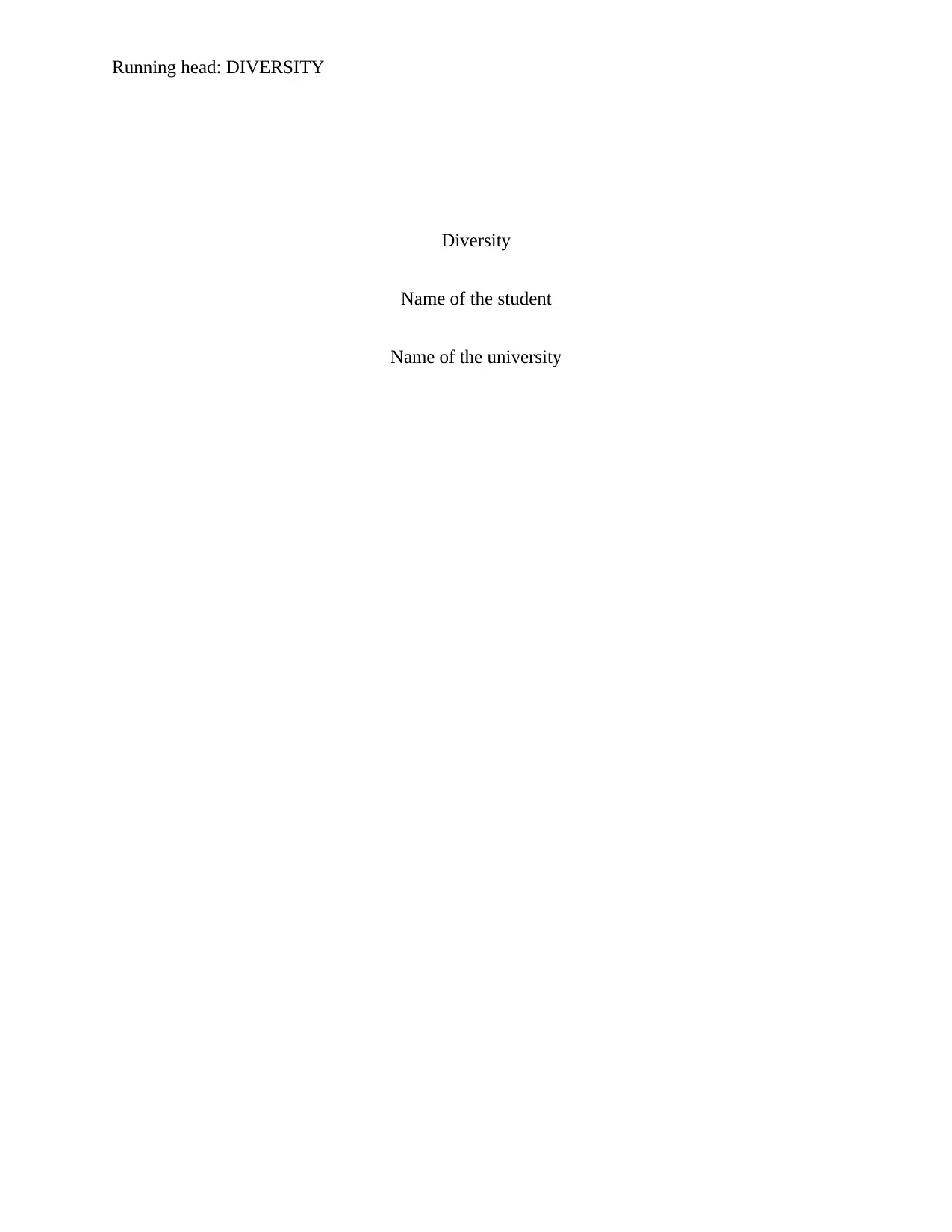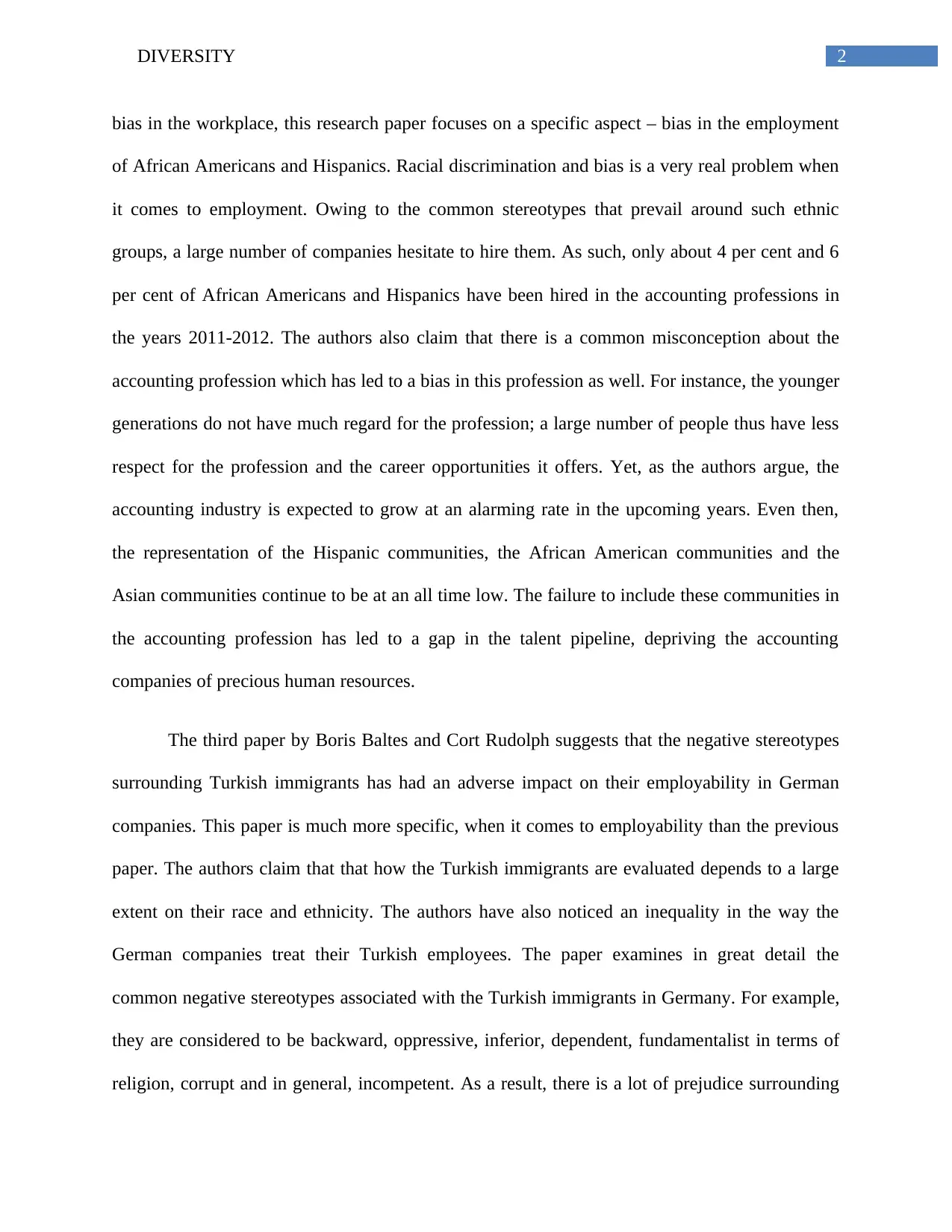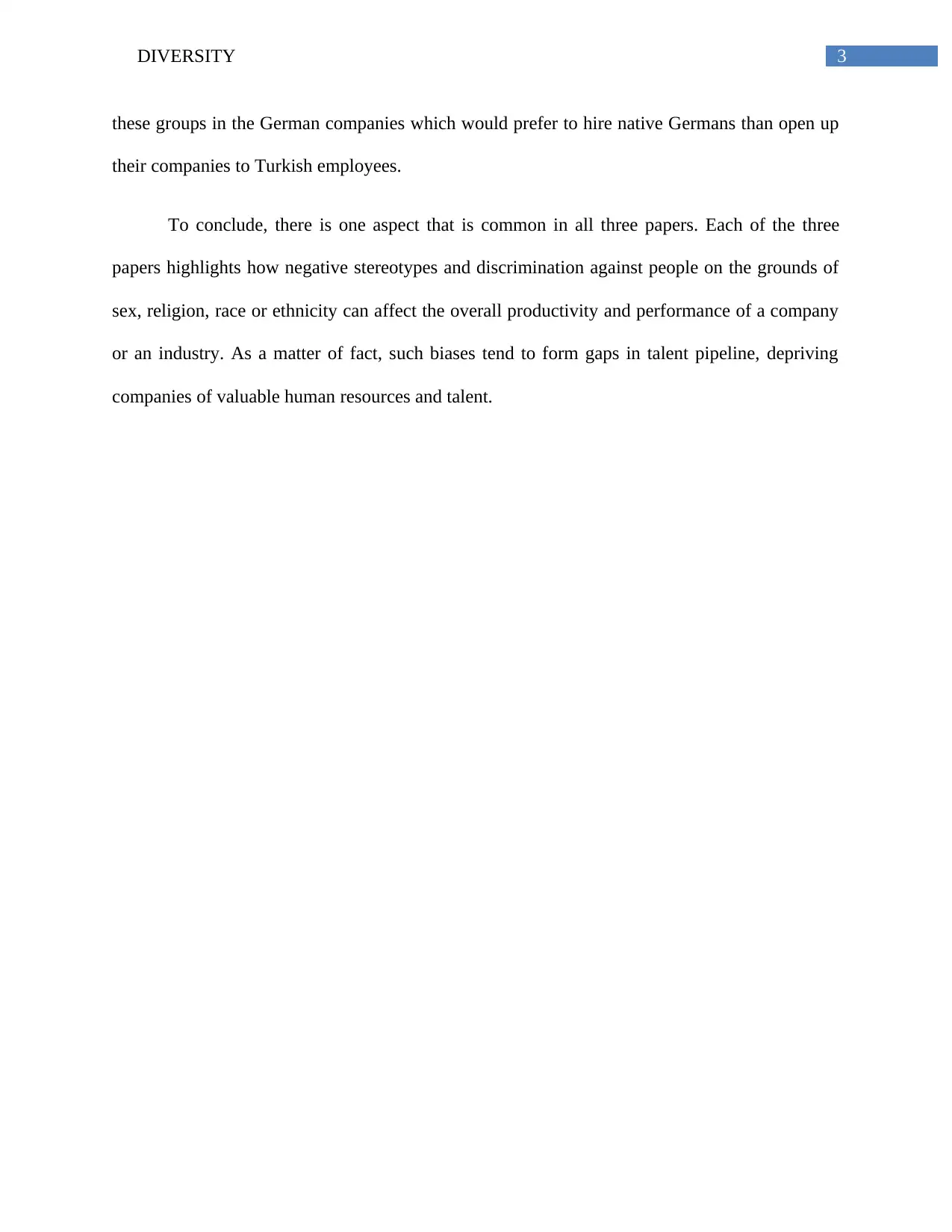Workplace Diversity: A Critical Analysis of Research Papers
VerifiedAdded on 2023/06/03
|4
|873
|398
Essay
AI Summary
This essay provides an analysis of diversity in the workplace, drawing insights from three articles. The first article highlights the prevalence of cultural bias despite corporate efforts to promote diversity, noting that employees who perceive bias are more likely to leave. The second article focuses on racial discrimination against African Americans and Hispanics in the accounting profession, emphasizing the resulting gap in the talent pipeline. The third article examines the negative stereotypes affecting the employability of Turkish immigrants in German companies. The essay concludes that negative stereotypes and discrimination based on sex, religion, race, or ethnicity can negatively impact a company's productivity and create gaps in the talent pipeline, depriving companies of valuable human resources and talent. Desklib offers this essay and many other resources for students.
1 out of 4






![[object Object]](/_next/static/media/star-bottom.7253800d.svg)